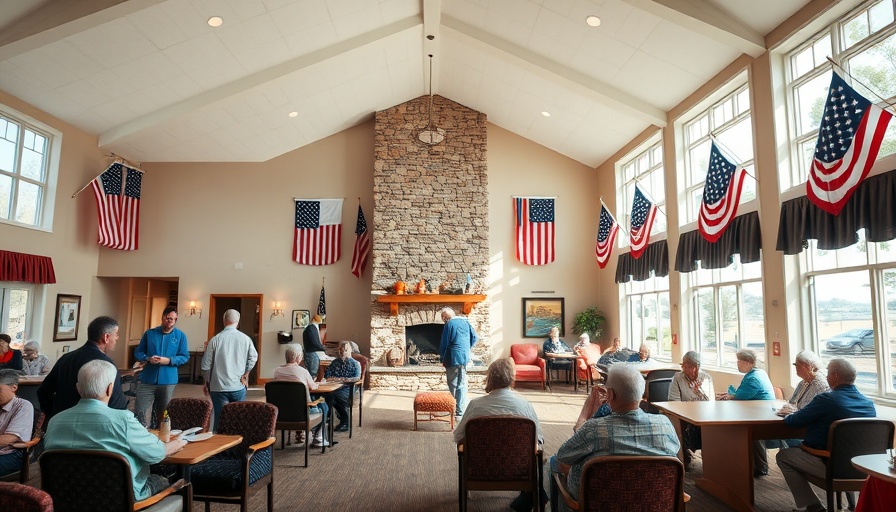
Understanding the Unique Needs of Veterans
Veterans have served their nations with honor, often at great personal sacrifice, yet as they transition into senior care, their unique needs are frequently overlooked. Designing care facilities tailored to these individuals is crucial in creating a comfortable and supportive environment where they can thrive. These spaces must acknowledge not only the physical requirements but also the emotional and psychological well-being of veterans.
Creating Invitations for Connection: Design Strategies
In developing shared spaces for senior care facilities, one essential goal is to foster social interaction. This becomes even more significant for veterans, who often possess a strong sense of camaraderie shaped through their military service. Designers are tasked with crafting communal areas that are inviting and flexible. By incorporating layouts that promote both group activities and quieter spaces, veterans can engage socially on their own terms, enjoying the company of others while also having the option for solitude. This dual approach enables a balance of connection and personal reflection, catering to the varied personalities and preferences within this demographic.
Honoring Identity: Balance in Design Elements
Integrating veterans’ cultural and military identity into senior care environments poses a unique challenge for designers. The objective is to incorporate elements of military heritage without overwhelming residents or creating a sense of nostalgia that may bring discomfort. By collaborating closely with community stakeholders and understanding their preferences, designers can outline a plan that respects individuality while celebrating camaraderie. Private rooms empower residents to express their personal style, creating a sense of ownership over their space, which is vital for emotional health.
The Shift Towards Technology-Enabled Living
The digital landscape is rapidly evolving, and many new residents in senior facilities are more tech-savvy than previous generations. Providing access to technology—including video calling rooms and secure communication systems—has become essential in bridging the gap between residents and their families. Facilities must ensure that robust Wi-Fi coverage supports personal devices and smart technology, thereby facilitating seamless interactions with loved ones. Adaptive technologies can enhance daily living and help veterans maintain connections that are crucial for their mental and emotional well-being.
Inclusive Design Approach: A Path Forward
Ultimately, the keys to designing effective senior care facilities lie in understanding the unique nuances of the veteran experience. From fostering social interaction through thoughtful spaces to ensuring that modernization does not compromise personal identity, designers have a monumental task to fulfill. Facilities that prioritize veterans’ needs can stand out as inclusive, warm, and genuinely supportive environments. This commitment not only honors those who served but also sets a standard for future developments in senior living.
Final Thoughts
As we continue to evolve in our understanding of veteran care, incorporating their voices and experiences in facility design will be paramount. Every veteran deserves a safe and supportive space to call home, one that celebrates their history and aids in creating new memories. Through intentional design practices, we can provide more than just care; we can offer a nurturing community where every individual feels valued and connected.
 Add Row
Add Row  Add
Add 






Write A Comment